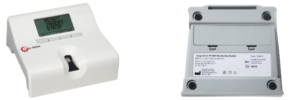Standards for Using Warfarin
Dosing vitamin K antagonist (warfarin) for patients can pose a challenge. That is why many many clinics establish a set of standardized guidelines for managing warfarin use. The starting dose should be tailored to the individual patient based on diagnosis, bleed risk, goal International Normalized Ratio (INR) range. Sensitivity to warfarin and potential interaction with other existing medications should also be considered. Adjustments for maintenance should be based upon current INR test results accounting for missed doses, diet (especially intake of vitamin K from food sources or supplements), and bleeding risk. Prescribed medications could also have an impact on INR test results.
Warfarin Dosing Recommendations
Warfarin dosing is often separated into initial and maintenance phases. After treatment is started, the INR response is monitored frequently until a stable dose-response relationship is obtained. Afterwards, the frequency of INR testing is reduced.
An anticoagulant effect is observed within 2 to 7 days after beginning oral warfarin. When a rapid effect is required, heparin should be given concurrently with warfarin for ≥4 days. Treatment can begin with the average maintenance dose of ≈5 mg daily, usually resulting in an INR of ≥2.0 after 4 or 5 days. Heparin can be stopped once the INR is within the therapeutic range for 2 days. Starting doses of <4 to 5 mg/day should be used in patients sensitive to warfarin, including the elderly and those at increased risk of bleeding.
INR is usually checked daily until the therapeutic range is reached and sustained for 2 consecutive days. Then it is checked 2 or 3 times weekly for 1 to 2 weeks. Once the INR becomes stable, the frequency of testing can be reduced to 4 week intervals. When dose adjustments are required, more frequent monitoring is resumed. Some patients on long-term warfarin therapy experience unexpected fluctuations in dose-response due to changes in diet, concurrent medication changes, poor compliance, or alcohol consumption. (Excerpt from Circulation).
Medication Management Tool for Patients Using Warfarin
For medication management, use the validated, CLIA-Waived support tools such as the Coag-Sense® PT/ INR Monitoring System. Evidence shows that patients falling within a desirable therapeutic INR range experience improved clinical outcomes over time. Initially, a doctor or clinic will establish the baseline and monitor patients for reactions. Eventually, a patient can continue testing on a scheduled basis at home. The Coag-Sense® PT2 System allows continuity from clinic to home using the same meter and settings to ensure a seamless experience for the healthcare provider and the patient.



